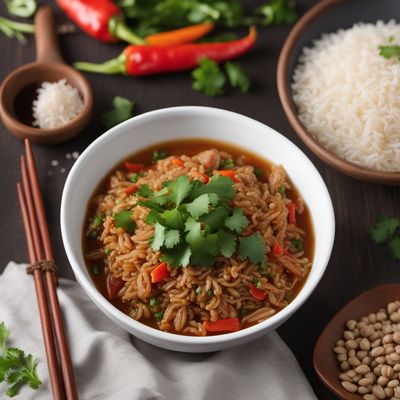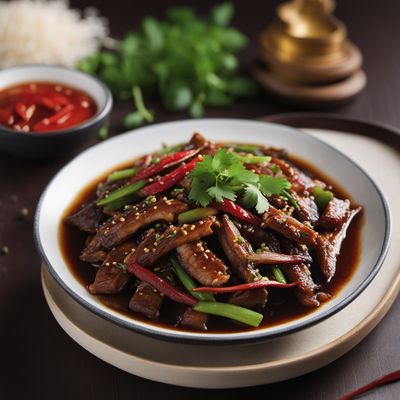
Cuisine
Beijing cuisine
Beijing cuisine is known for its emphasis on the use of fresh ingredients, particularly meats and vegetables. It is also characterized by its use of strong flavors, such as garlic, ginger, and scallions, and its preference for roasting and braising over stir-frying. The cuisine is often described as hearty and flavorful, with a focus on natural flavors and textures.
Typical ingredients
Peking duck, Lamb, Pork, Tofu, Scallions, Garlic, Ginger, Soy sauce, Vinegar, Sesame oil
Presentation and garnishing
Beijing cuisine is typically presented in individual portions, with an emphasis on natural colors and textures. Garnishes are simple and understated, with a focus on highlighting the natural beauty of the ingredients.
Beijing cuisine is also known as Jing cuisine, after the historical name for Beijing. The cuisine is often associated with the imperial court, and is considered a symbol of Chinese culture and tradition.
More cuisines from this region...
Liaoning cuisine, Chinese aristocrat cuisine, Chinese imperial cuisine
History
Beijing cuisine has a long history dating back to the Ming Dynasty (1368-1644). It originated in the imperial kitchens of the Forbidden City, where the chefs developed a cuisine based on the ingredients available in the region. Over time, Beijing cuisine has been influenced by neighboring cuisines, particularly those of Shandong and Inner Mongolia. Today, Beijing cuisine is enjoyed throughout China and around the world.
Cultural significance
Beijing cuisine is closely associated with the imperial court of the Ming and Qing dynasties, and is often served at banquets and special occasions. The cuisine is also known for its association with Peking duck, which is considered a symbol of Beijing cuisine around the world. Beijing cuisine is considered a symbol of Chinese culture and hospitality.
Health benefits and considerations
Beijing cuisine is considered to be healthy and nutritious, with a focus on fresh ingredients and simple methods of preparation. However, some dishes may be high in fat and sodium, so it is important to consume them in moderation.
Beijing cuisine recipes Browse all »

Blueberry Pie with a Beijing Twist
Beijing-style Blueberry Delight

Beijing-style Spicy Fruit Relish
Fiery Fruit Fusion: Beijing's Spicy Mostarda

Beijing-style Stuffed Rice Pilaf
Savory Rice Delight: Beijing-style Stuffed Pilaf

Beijing-style Steamed Dumplings
Savory Steamed Delights: Beijing-style Dumplings

Beijing-style Stir-Fried Celery
Wok-tossed Celery Delight

Beijing-style Roast Pork Sandwich
The Perfect Fusion: Beijing-style Roast Pork Sandwich

Beijing-style Stir-Fried Eel
Sizzling Beijing Eel Delight

Beijing-style Spicy Noodles
Fiery Beijing Noodles: A Spicy Twist on a Classic Dish

Crispy Fried Fish with Beijing Flavors
Beijing-style Crispy Fish: A Fusion of Flavors

Beijing-style Rassolnik Soup
Savory Pickle Soup with a Beijing Twist

Beijing-style Chosilog
Savory Beijing-style Beef and Egg Rice Bowl

Beijing-style Crispy Potato Skins
Crispy Potato Skins with a Beijing Twist